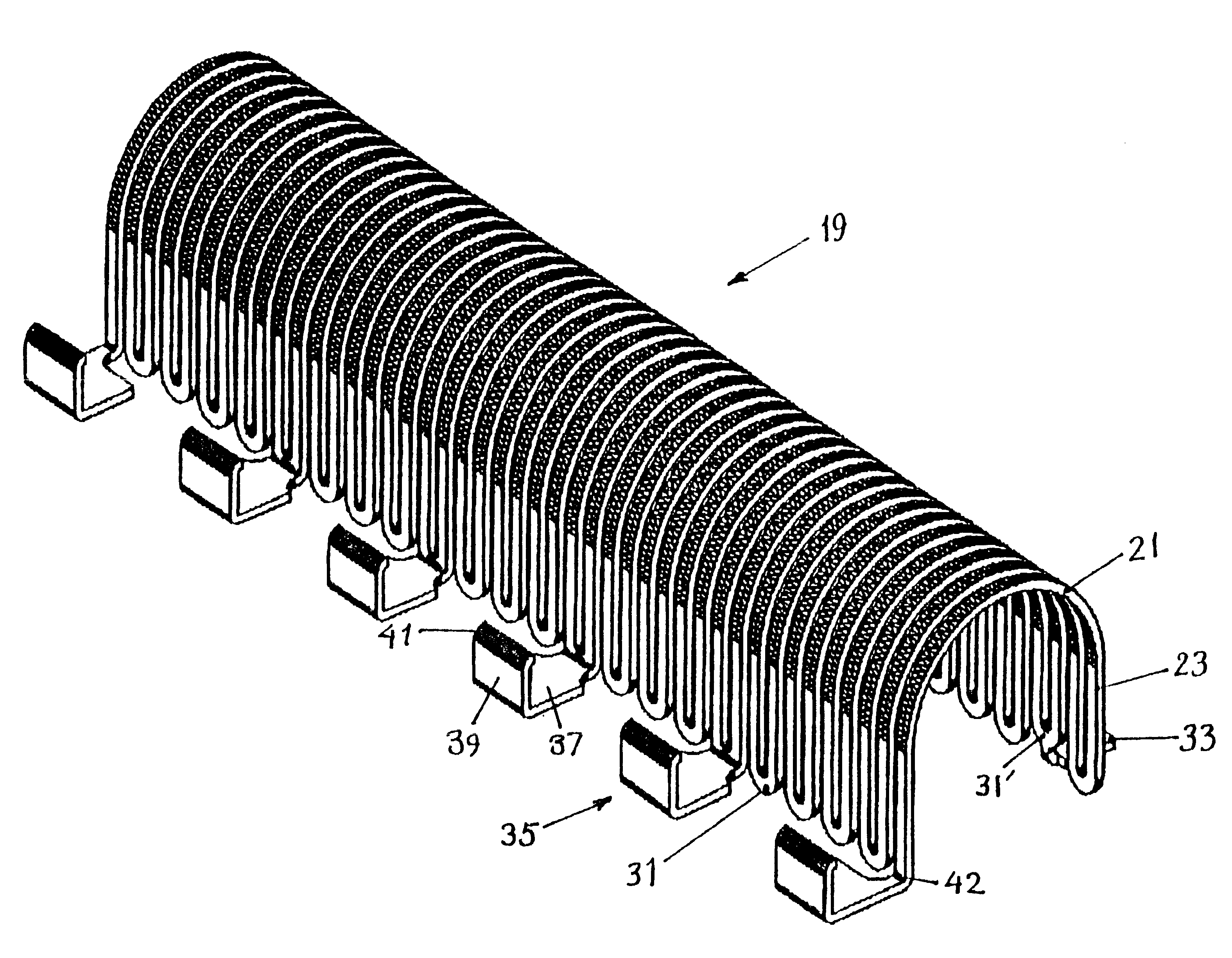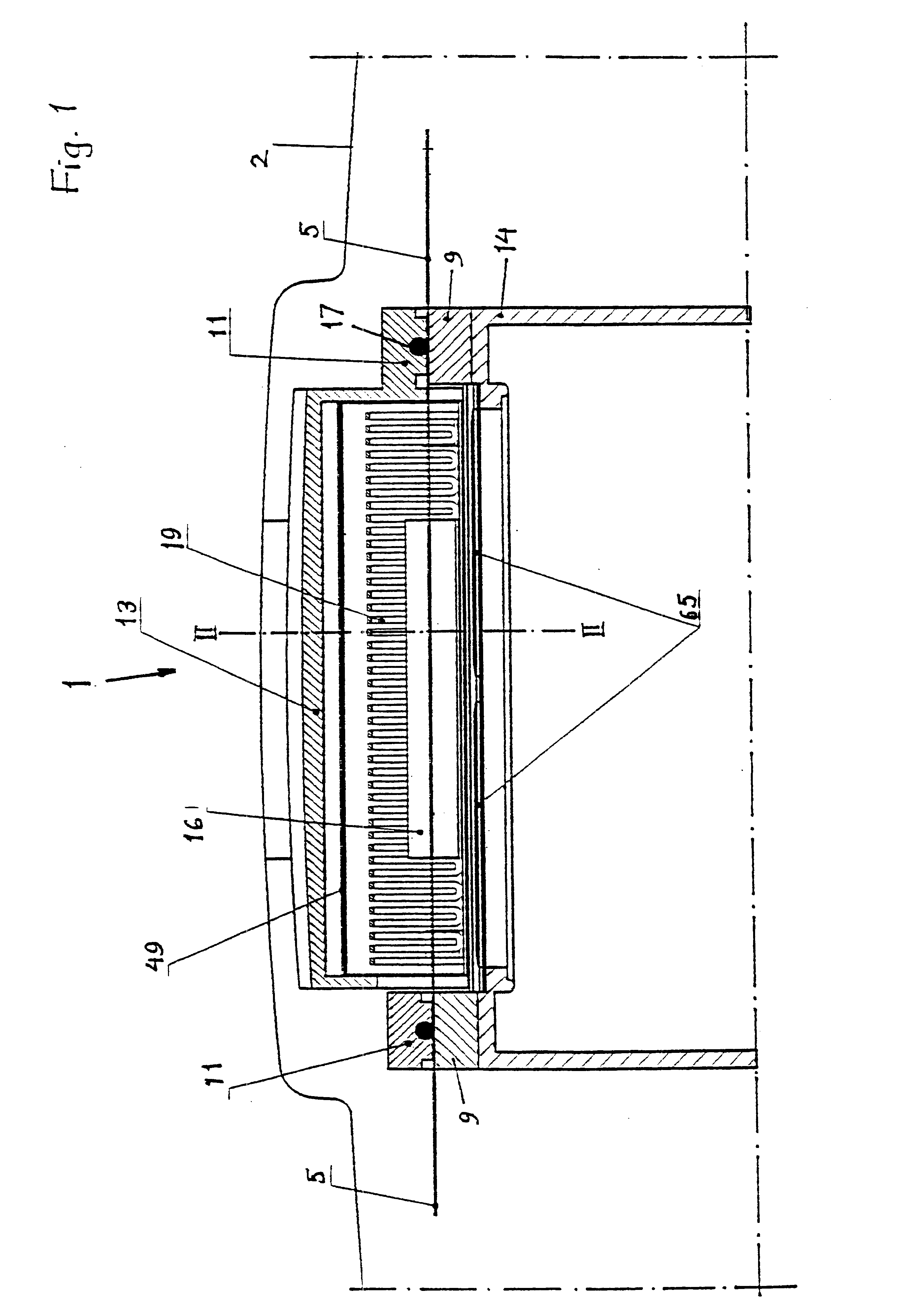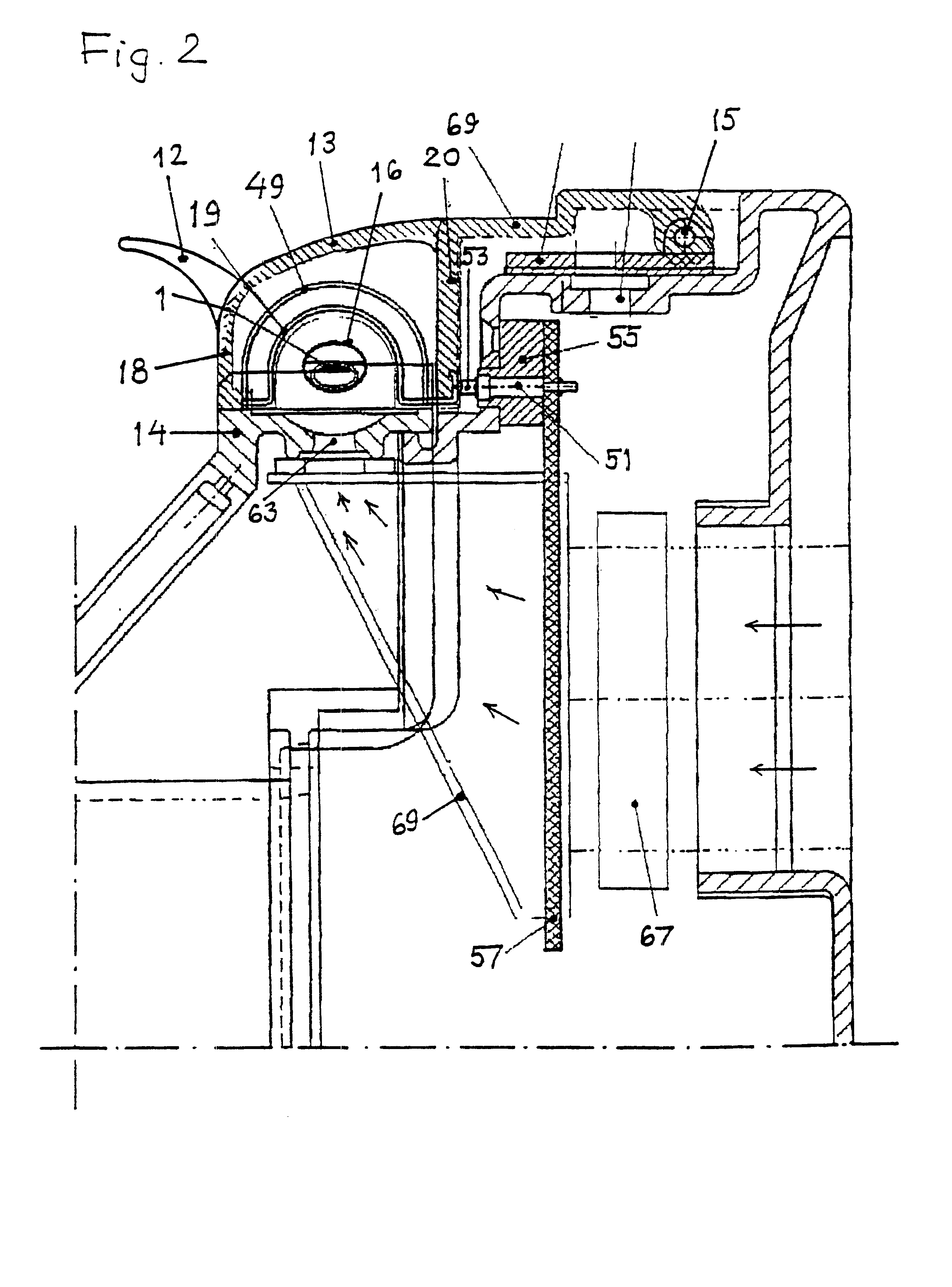Device for heating shrinkable sleeves
a shrinkable and device technology, applied in the field of devices for heating shrinkable sleeves, can solve the problems of degrading mechanical properties, slow control of heating or shrinking process, and normal cooling process taking a long tim
- Summary
- Abstract
- Description
- Claims
- Application Information
AI Technical Summary
Benefits of technology
Problems solved by technology
Method used
Image
Examples
Embodiment Construction
In FIG. 1 a cross-sectional view in the longitudinal direction of a heating device 1, that is closed or folded together, is shown which is intended for shrinkable sleeves placed over a splice position of an optical fiber or, as will be assumed hereinafter, an optical ribbon fiber. The heating device 1 is housed in an automatic fiber splicing device, only the profile of the casing of which being shown at 2. A spliced optical ribbon fiber 5 placed in the heating device, in FIG. 1 seen from the side in a direction parallel to the large surfaces thereof, rests only on upper, upwards facing surfaces of lower support blocks 9 at the end surfaces of the device and is firmly retained in contact with these support surfaces by downwards facing and downwards pressing surfaces of upper support blocks or gripping arms 11 placed at the end surfaces of a lid 13, which is shown in a folded-down state in the figures. The lid 13 is at its rear part rotatably mounted by shaft 15 to a fixed support par...
PUM
| Property | Measurement | Unit |
|---|---|---|
| area | aaaaa | aaaaa |
| resistance | aaaaa | aaaaa |
| heating resistance | aaaaa | aaaaa |
Abstract
Description
Claims
Application Information
 Login to View More
Login to View More - R&D
- Intellectual Property
- Life Sciences
- Materials
- Tech Scout
- Unparalleled Data Quality
- Higher Quality Content
- 60% Fewer Hallucinations
Browse by: Latest US Patents, China's latest patents, Technical Efficacy Thesaurus, Application Domain, Technology Topic, Popular Technical Reports.
© 2025 PatSnap. All rights reserved.Legal|Privacy policy|Modern Slavery Act Transparency Statement|Sitemap|About US| Contact US: help@patsnap.com



